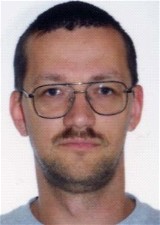Org. Synth. 2009, 86, 105
DOI: 10.15227/orgsyn.086.0105
PALLADIUM (II) ACETATE-BUTYLDI-1-ADAMANTYLPHOSPHINE CATALYZED ARYLATION OF ELECTRON-RICH HETEROCYCLES. PREPARATION OF 5-PHENYL-2-ISOBUTYLTHIAZOLE.
Submitted by Anna Lazareva, Hendrich A. Chiong, and Olafs Daugulis
1.
Checked by Sirilata Yotphan and Jonathan A. Ellman.
1. Procedure
A 500-mL oven-dried Schlenk flask equipped with a magnetic stir bar and a rubber septum is charged with palladium(II) acetate (342 mg, 1.5 mmol, 0.05 equiv), sodium acetate (1.23 g, 15 mmol, 0.50 equiv), n-butyldi-1-adamantylphosphine (576 mg, 1.5 mmol, 0.05 equiv), and tribasic potassium phosphate (6.36 g, 30 mmol, 1.00 equiv). The Schlenk flask is evacuated and back-filled with dry argon three times. Anhydrous N,N-dimethylacetamide (120 mL), 2-isobutylthiazole (4.25 mL, 30 mmol, 1.00 equiv), and chlorobenzene (4.5 mL, 45 mmol, 1.50 equiv) are added via a gas tight syringe (Note 1). Under a continuous flow of argon the rubber septum is quickly replaced with a reflux condenser and bubbler to ensure an air-free system. The mixture is stirred in a preheated oil bath at 125 °C for 36 h (Note 2). A continuous argon flow is maintained throughout the reaction. The yellow color of the reaction mixture changes to dark brown after 5-10 min of heating. Potassium phosphate does not dissolve and a mild reflux is observed. The conversion is monitored by GC (Note 3). If complete conversion is not achieved after 36 h, the reaction mixture is heated for an additional 2-4 h.
After the reaction is complete as judged by GC analysis (Note 3), hydrazine hydrate (30 mL) is added in one portion and the flask is heated in an oil bath (125 °C) for 5 h (Note 4). At this point, the argon atmosphere is no longer required. The reaction mixture is cooled to room temperature followed by the addition of water (100 mL) and dichloromethane (50 mL). The mixture is transferred to a 2-L separatory funnel. Additional water (200 mL) and dichloromethane (100 mL) are added to the separatory funnel. After separation of the organic layer, the water layer is extracted with dichloromethane (3 × 150 mL) (Note 5). Magnesium sulfate (about 12 g) is directly placed in a 150-mL Büchner filter funnel with a medium porosity fritted disk. A round-bottomed flask (1-L) is connected to the filter funnel and the combined organic phase is filtered through the MgSO4 layer (Note 6). The combined organic extracts are not treated with MgSO4 beforehand. The reaction mixture is concentrated by rotary evaporation (40 °C, 15 mm Hg). Following concentration, 120-130 mL of the crude product solution in DMA is left in the flask. The reaction mixture is transferred to a 500-mL round-bottomed flask equipped with a magnetic stir bar. The solvent is removed by vacuum distillation (1.6 mm Hg) through a 4-cm column to a 200-mL round-bottomed receiver flask. The boiling point of DMA is 38-39 °C /1.6 mmHg; the temperature of the oil bath is kept at 65-70 °C (Note 7). After the distillation is complete the temperature inside the distillation apparatus drops to about 23 °C. The distillation residue is diluted with 10 mL of chromatography eluent mixture (hexanes/dichloromethane; 1/2). The crude product is purified by flash chromatography on silica gel (5 × 19 cm, 200 g of silica gel) (Note 8), using hexanes/dichloromethane (1/2) as the eluent (900 mL). The first fractions are blank, followed by fractions containing minor amounts of impure and then pure product. The elution is continued with 5% ethyl acetate/dichloromethane (about 1.1 L collected). After concentration of the fractions containing pure product, the residue is dried under reduced pressure (1.0 mmHg) at room temperature for 24 h to yield the arylated heterocycle. The pure product (6.15 g, 94%) is obtained as an air stable, light brown oil (Notes 9 and 10).
2. Notes
1.
All reagents were used as received. Palladium acetate was obtained from Gelest, Inc. (purity > 95%). Potassium phosphate tribasic (reagent grade, ≥ 98%), anhydrous DMA (anhydrous, 99.8%), and hydrazine hydrate (reagent grade, N
2H
4 50-60%) were obtained from Aldrich. Butyldi-1-adamantylphosphine (min. 95%) was purchased from Strem. 2-Isobutylthiazole was obtained from Oakwood Products. Chlorobenzene was obtained from Aldrich (anhydrous, 99.8%), and sodium acetate (assay min. 99.0%) was purchased from Mallinckrodt Chemicals. Bulk of the air sensitive reagents (tribasic potassium phosphate and butyldi-1-adamantylphosphine) was stored in an argon-filled glovebox. Small portions were taken out of the glovebox and stored on the bench in capped vials for up to one month. The submitters used chlorobenzene purchased from Matheson, Coleman & Bell Manufacturing Chemists and sodium acetate (assay min. 99.0%) purchased from Mallinckrodt Chemicals.
2.
If the reaction mixture is not vigorously stirred, complete conversion is not achieved. Stir bar size: 3.5 cm length and 1 cm diameter. Stirring rate: 1000-1100 rpm.
3.
GC analyses (by the submitters) were performed on a Shimadzu CG-2010 chromatograph equipped with a Restek column (Rtx®-5, 15 m, 0.25 mm ID). Initial temp: 50 °C (2 min), ramp at 50 °C/min to 170 °C, hold at 170 ° (3 min), ramp at 40 °C/min to 270 °C, hold at 270 (5 min). Retention times: 2-isobutylthiazole (3.17 min) and 5-phenyl-2-isobutylthiazole (6.30 min). GC analyses (by the checkers) were performed on an Agilent 6890N chromatograph equipped with an Agilent column (DB-1, polysiloxane, 15 m, 0.25 mm ID). Initial temp: 50 °C (2 min), ramp at 50 °C/min to 170 °C, hold at 170 ° (3 min), ramp at 40 °C/min to 270 °C, hold at 270 (5 min). Retention times: 2-isobutylthiazole (5.07 min) and 5-phenyl-2-isobutylthiazole (10.08 min). Aliquots from reaction are concentrated by rotary evaporation (50 °C, 15 mmHg) and diluted with 0.5 mL of CH
2Cl
2 for GC analyses. After 36 h, >99% of the starting material (2-isobutylthiazole) is consumed.
4.
Hydrazine workup removes palladium residue from the product.
5.
Organic and water layers must separate completely. Both phases must be clear, not cloudy, and there must be a sharp border between the two. Otherwise, the yield will be lower.
6.
The checkers used magnesium sulfate (anhydrous certified powder) purchased from Fisher Chemical.
7.
For efficient purification by flash chromatography
ALL DMA must be removed by distillation.
8.
Flash chromatography was performed on 60Å silica gel (Sorbent Technologies). The checkers performed flash chromatography on 60Å silica gel (MP Silitech 32-63D). All solvents are HPLC grade purchased from Fisher Chemical.
9.
The characterization of the product is as follows: R
f=0.19 (hexanes/dichloromethane (1:2), visualization by UV;
1H NMR
pdf (400 MHz, CDCl
3) δ: 1.00 (d,
J = 6.8 Hz, 6 H), 2.07-2.19 (m, 1 H), 2.86 (d,
J = 6.8 Hz, 2 H), 7.26-7.30 (m, 1 H), 7.34-7.38 (m, 2 H), 7.50-7.52 (m, 2 H), 7.81 (s, 1 H).
13C NMR
pdf (75 MHz, CDCl
3) δ: 22.5, 30.0, 42.7, 126.8, 128.2, 129.2, 131.8, 137.8, 138.7, 169.9. FT-IR (neat, cm
-1) 2957, 1601, 1530, 1491, 1458. Anal calcd for C
13H
15NS: C, 71.84; H, 6.96; N, 6.44; Found: C, 71.49; H, 6.78; N, 6.13.
10.
On the same scale, the submitters reported product yields of 5.99-6.26 g (92-96%). On a half-scale run, the checkers obtained 2.92 g of product (90%).
Handling and Disposal of Hazardous Chemicals
The procedures in this article are intended for use only by persons with prior training in experimental organic chemistry. All hazardous materials should be handled using the standard procedures for work with chemicals described in references such as "Prudent Practices in the Laboratory" (The National Academies Press, Washington, D.C., 2011 www.nap.edu). All chemical waste should be disposed of in accordance with local regulations. For general guidelines for the management of chemical waste, see Chapter 8 of Prudent Practices.
These procedures must be conducted at one's own risk. Organic Syntheses, Inc., its Editors, and its Board of Directors do not warrant or guarantee the safety of individuals using these procedures and hereby disclaim any liability for any injuries or damages claimed to have resulted from or related in any way to the procedures herein.
3. Discussion
The combination of palladium(II) acetate with an electron-rich butyldi-1-adamantylphosphine ligand is a versatile catalyst for the direct arylation of electron-rich heterocycles with aryl chlorides.
2 The use of aryl bromides and aryl iodides in palladium-catalyzed direct heterocycle arylations is well-known.
3 However, a general method employing aryl chloride reagents has not been reported so far for such reactions.
4 Most of the published catalytic systems are efficient for only a few types of heterocycles thus limiting the generality of the reaction, and stoichiometric copper additives are often needed for successful arylation. This methodology overcomes most of the limitations described above. A number of structurally diverse electron-rich heterocycles are reactive (Table 1).
2 Thiophene, benzothiophene, 1,2- and 1,3-oxazole derivatives, benzofuran, thiazoles, benzothiazole, 1-alkylimidazoles, 1-alkyl-1,2,4-triazoles, and caffeine can be arylated. Both electron-rich and electron-poor aryl chlorides can be used; however, electron-poor chlorides are more reactive. Some steric hindrance is tolerated on the heterocycle and aryl chloride.
The arylation mechanism may be dependent on the heterocycle type. For example, triazole and imidazole arylations most likely proceed by an electrophilic aromatic substitution mechanism due to the observed regioselectivity.
5 Benzoxazole arylation may proceed via ring-opening pathways.
6While the method is very general, some additional optimization may be required to maximize reaction yields, since the heterocycles that can be arylated are very structurally different. The procedure for the phenylation of isobutylthiazole has been optimized and the reaction conditions have been modified from the original report
2 by decreasing the amount of phosphine ligand, adding sodium acetate reagent, and using DMA instead of NMP as the solvent. Under the conditions reported initially, about 80-85% conversion to phenylated derivative was observed as opposed to complete conversion by using these modified conditions. However, if these modified reaction conditions are used for the 2-methoxyphenylation of caffeine, lower conversion is obtained compared to the original procedure. The examples in Table 1 have been obtained by using the original conditions.
2 The limitations of the procedure are as follows: Arylation of NH-containing heterocycles such as indoles or pyrroles results in
N-functionalization. Arylation of
N-substituted indoles does not go to completion even if extended reaction times are used, and isomer mixtures are usually obtained. Benzofuran monoarylation results in the formation of a mixture of isomers.
Table 1. Heterocycle Arylation.a
Appendix
Chemical Abstracts Nomenclature (Collective Index Number);
(Registry Number)
Palladium(II) acetate; (3375-31-3)
Sodium acetate; (127-09-3)
Butyl di-1-adamantylphosphine; (321921-71-5)
Tribasic potassium phosphate; (7778-53-2)
2-Isobutylthiazole; (18640-74-9)
Chlorobenzene; (108-90-7)
Hydrazine hydrate; (10217-52-4)
5-Phenyl-2-isobutylthiazole; (6007
32-10-3)
 |
Olafs Daugulis was born in Riga, Latvia in 1968. He obtained his B.S. degree in chemical engineering from Riga Technical University in 1991. His Ph.D. research was performed at the University of Wisconsin-Madison in the group of Prof. E. Vedejs. After obtaining his Ph.D. in 1999 he joined the group of Prof. M. Brookhart at UNC-Chapel Hill as a postdoctoral associate. Since 2003, he has been an Assistant Professor of Chemistry at the University of Houston.
|
 |
Anna Lazareva was born in Donetsk, Ukraine in 1979. She obtained her B.S. degree in chemistry from the University of Houston in 2006. After joining the Daugulis group in 2006, she received her MS degree in chemistry in 2008. Currently she is a Staff Chemist in the Medicinal Chemistry Department at Merck in Rahway, NJ.
|
 |
Hendrich A. Chiong was born in the Philippines in 1976 where he obtained his B.S. in chemistry in 1996. He joined the Daugulis group at the University of Houston in 2003 and received his Ph.D. in chemistry in 2007. Currently he is a Research Process Chemist at Sabic Innovative Plastics High Performance Polymers (HPP) in Mt. Vernon, IN.
|
 |
Sirilata Yotphan grew up in Lampang, Thailand. She obtained her B.S. degree in chemistry from McGill University, Canada in 2006. She then began her doctoral studies at the University of California, Berkeley in the laboratories of Professor Jonathan A. Ellman and Professor Robert G. Bergman. Her graduate research has focused on metal-catalyzed C-H bond functionalization.
|
Copyright © 1921-, Organic Syntheses, Inc. All Rights Reserved